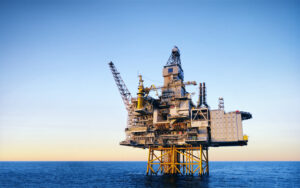FDM 3D Printing for the Oil and Gas Industry

3D additive manufacturing provides many benefits over traditional subtractive manufacturing processes, including less expensive production costs and faster turnaround times. It can produce highly precise and durable parts suitable and resistant to a number of environmental hazards such as humidity, extreme heat, extreme cold, UV radiation, and more.
Fused Deposition Modeling (FDM) 3D Printing
There are several types of 3D printing. Fused deposition modeling (FDM) is the one most commonly used for industrial applications. In the FDM process, a molten filament of thermoplastic feedstock material is fed through an extruder and deposited layer upon layer via a spray nozzle until the object has achieved its desired form.
Why is FDM 3D printing so popular? Here are a few of the reasons:
- There is a wider range of available filament materials.
- FDM is faster and less expensive than other types of 3D printing.
- It can be used to create pieces with complex geometries
- FDM printers can handle larger pieces.
- High-precision production with consistent and repeatable results,
- Produces less waste making it more eco-friendly.
Oil and Gas Industry Applications for FDM Printing
FDM 3D printing has been a game changer for a number of industries, including oil and gas production. This sector was slow to adopt 3D print technology; however, today 3D printed parts and components play a critical role in all three segments of the oil and gas production industry: upstream, midstream, and downstream. Shell, Chevron, ExxonMobil, and BP are just a few of the major energy companies that are utilizing 3D printing for their operations.
Upstream Operations
Upstream operations are those involved in exploration and extracting oil and gas from the ground. 3D components can be found in a wide range of components used in upstream operations, including clean-out tools, pumping, and filtration equipment, high-pressure piping components, and drilling equipment.
Midstream Operations
Midstream operations involve the safe and efficient transfer of oil and gas from upstream sources to downstream operations. Many pumping and pipeline components, including pressure gauge pieces, gaskets, control-valve components, and pump manifolds are manufactured using 3D printers.
Downstream Operations
3D components are components in a number of downstream applications, including those used to process and refine raw oil and gas into usable fuels and other products.
ProTek Models Provides FDM 3D Print Services for Houston’s Oil and Gas Industry
No matter what segment of the oil and gas industry your company serves, Pro Tek Models and 3D Printing can help. We offer customers the latest in FDM and SLA 3D print technologies. If you can design it, our talented team of engineers can make it real – call us for more information!
Located in Conroe, TX just north of Houston, Pro Tek Models is becoming Houston’s go-to source for high-quality 3D-printed components. Our client list includes Raytheon, Oceaneering, Boeing, NASA, and Mitsubishi. Contact us through our website or call us at (832) 968-6636 to discuss your FDM 3D print project.

